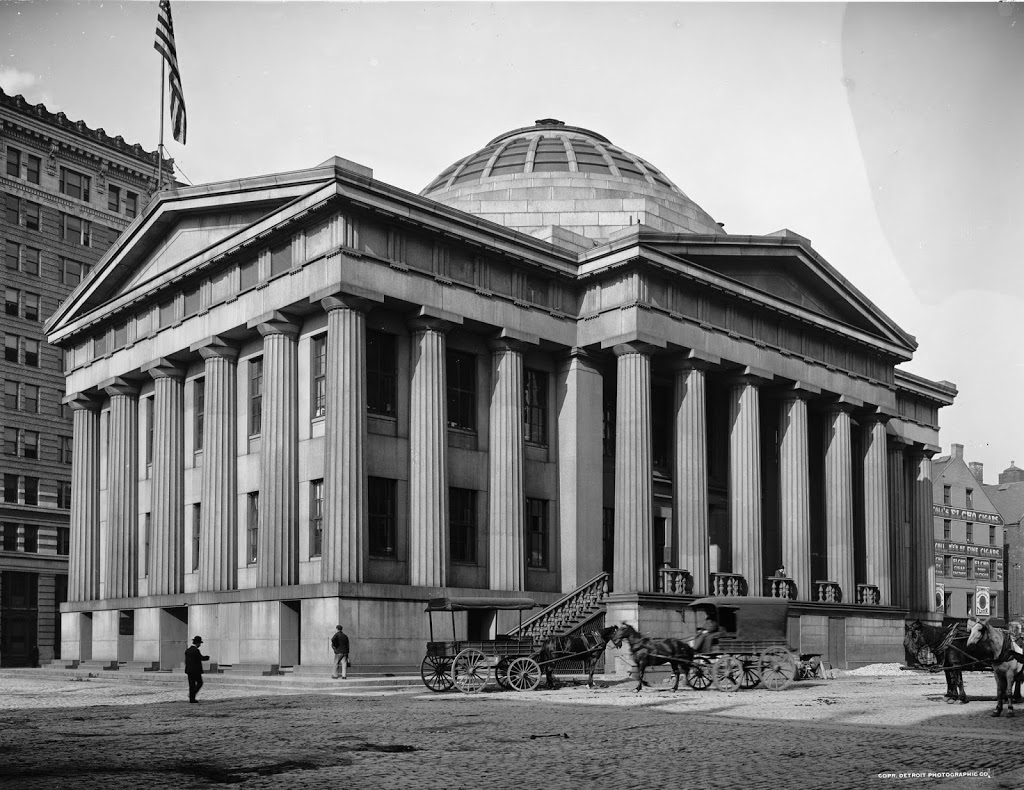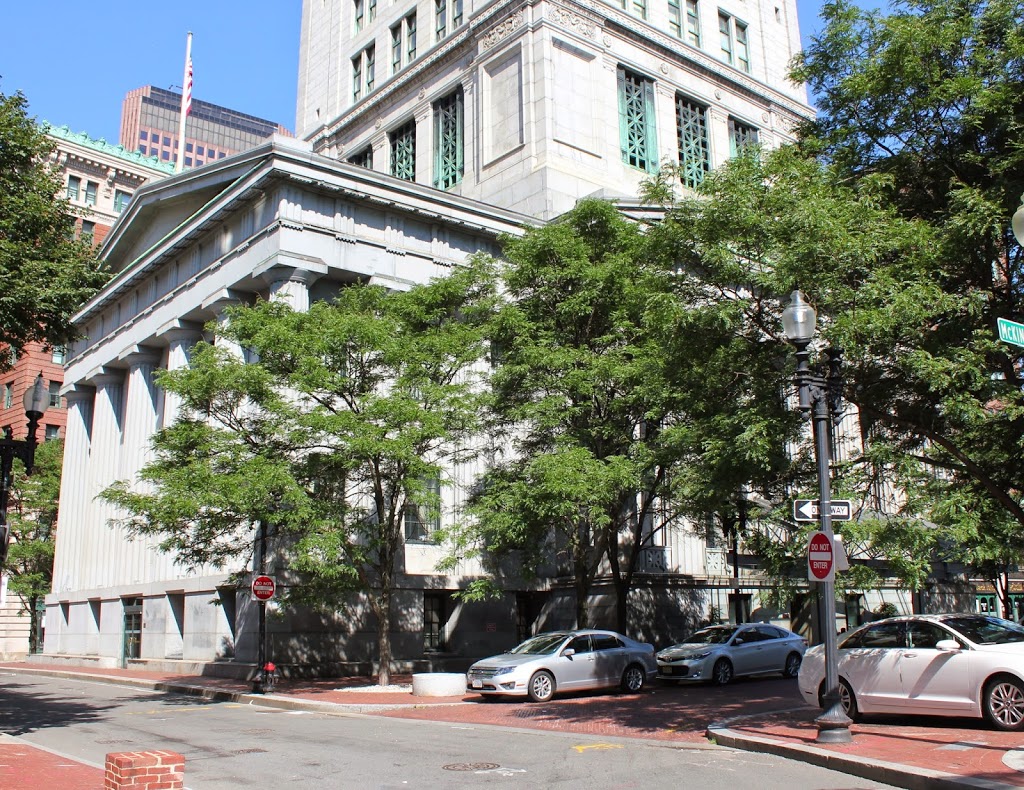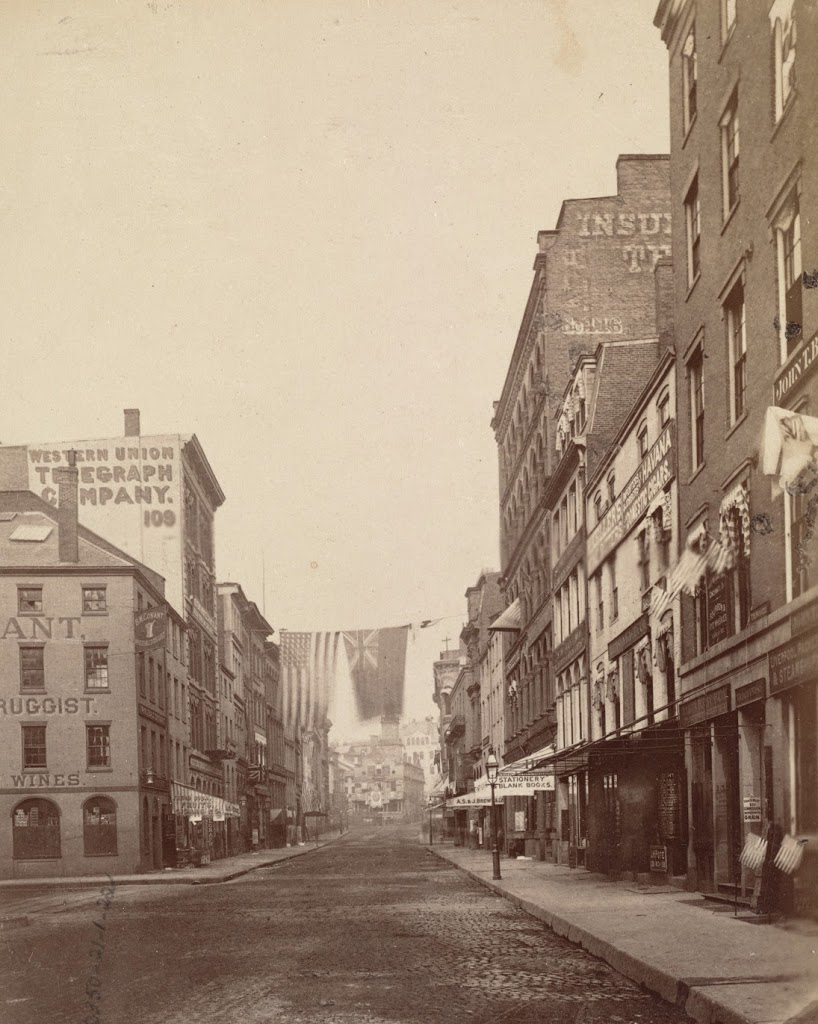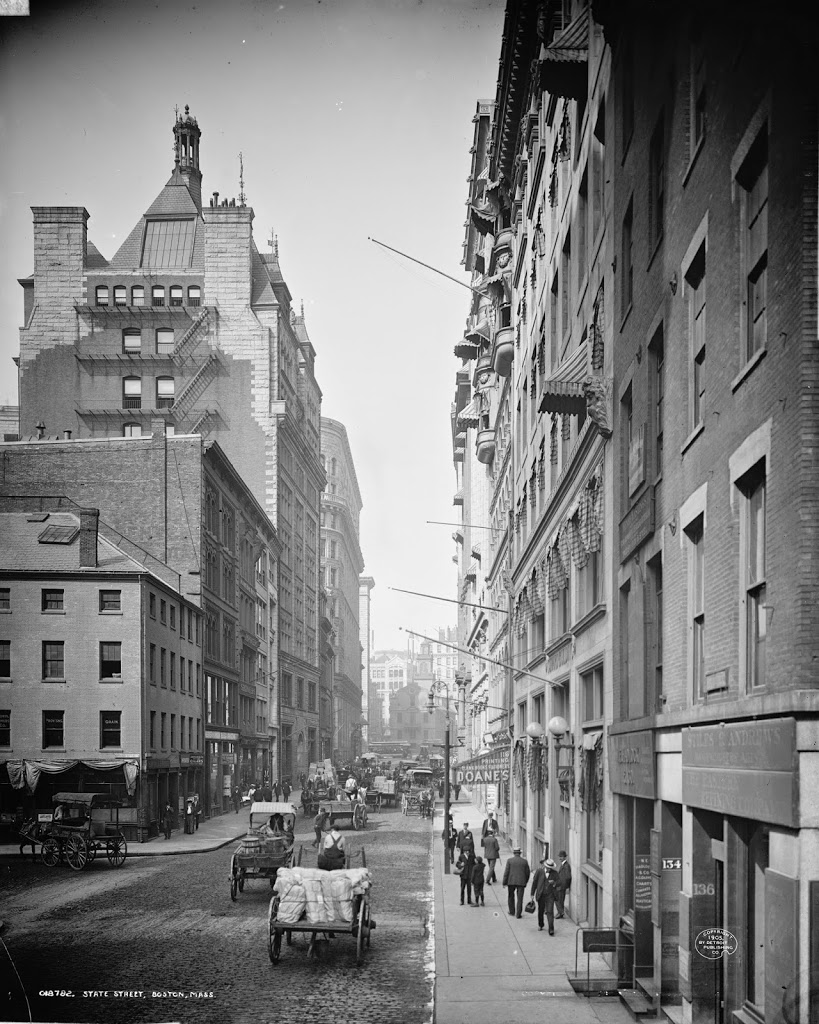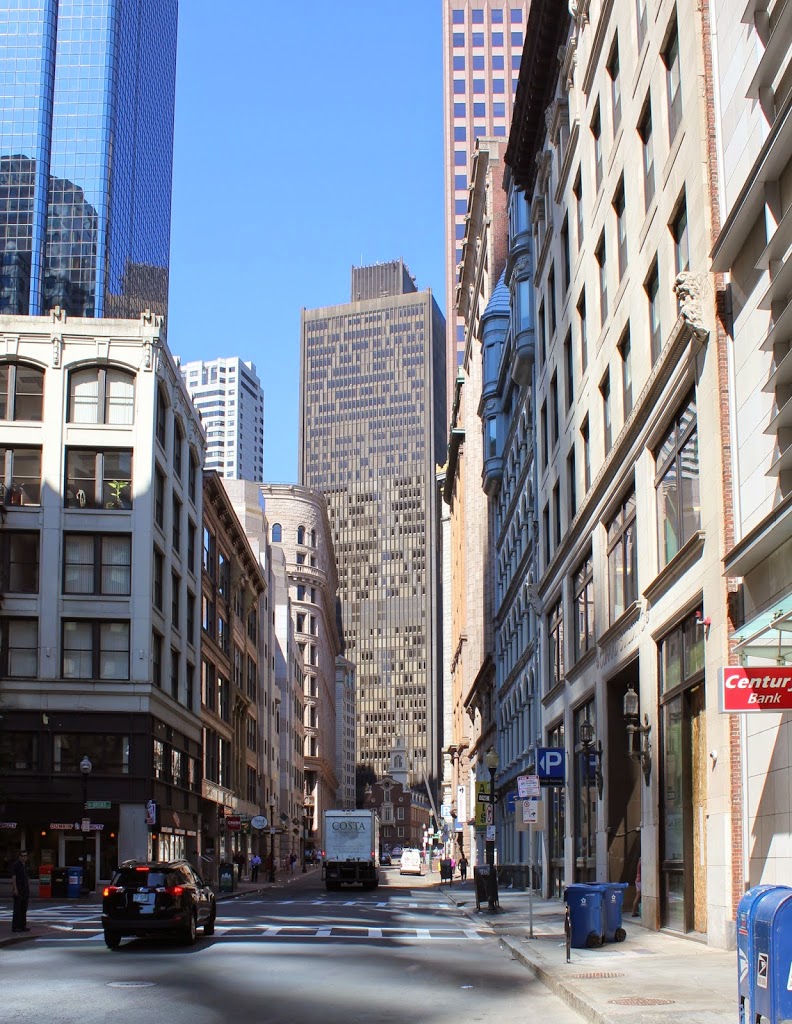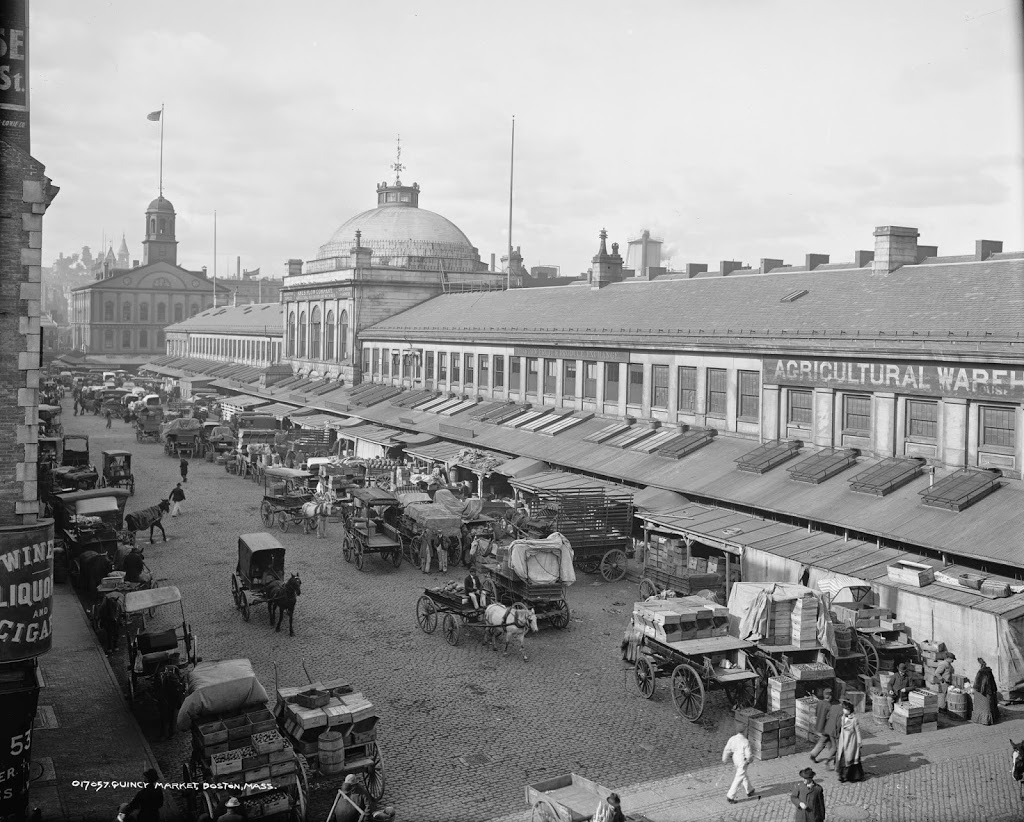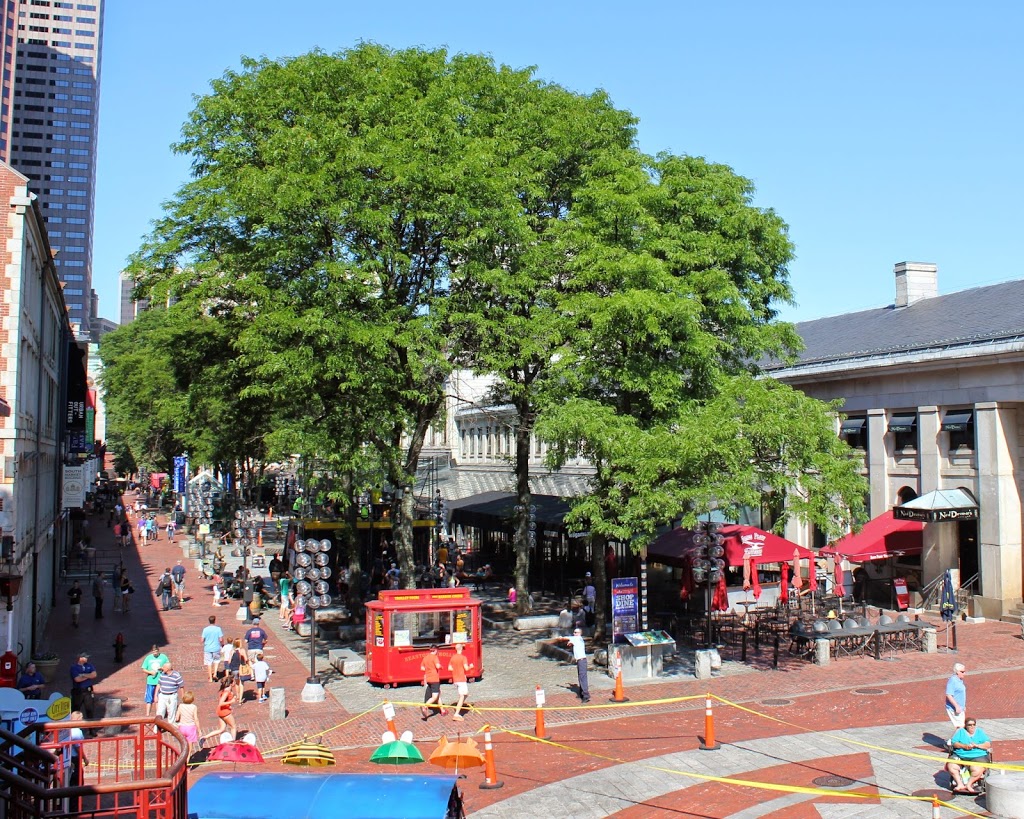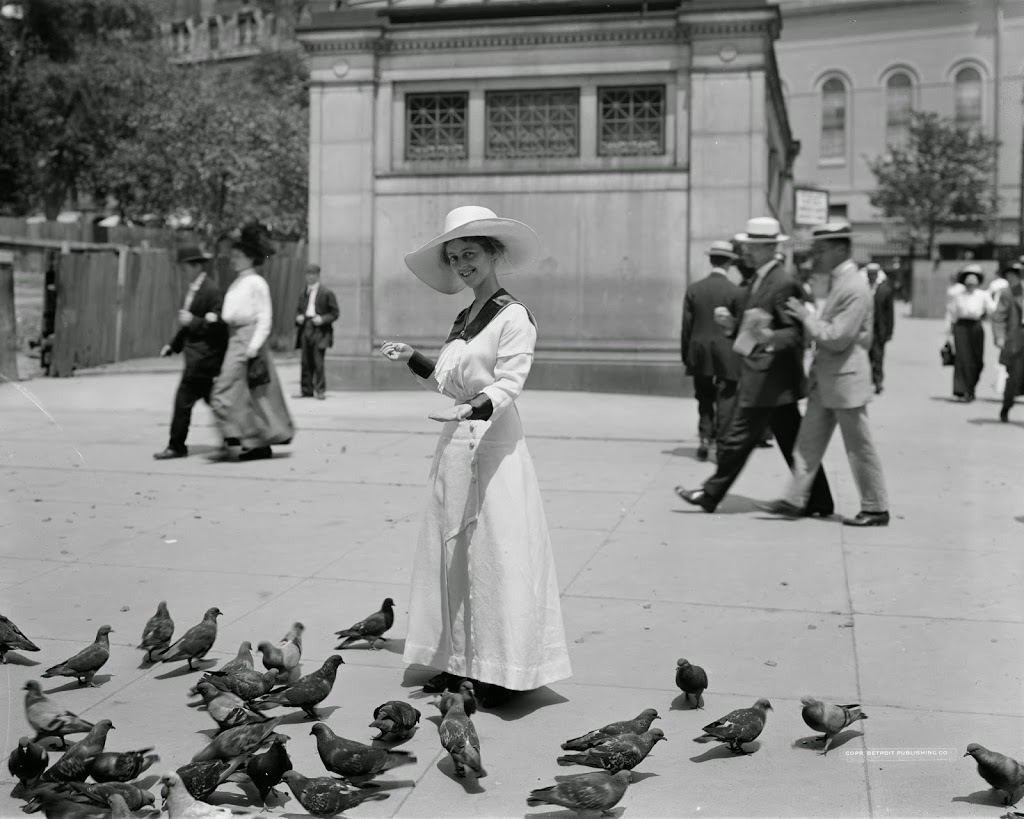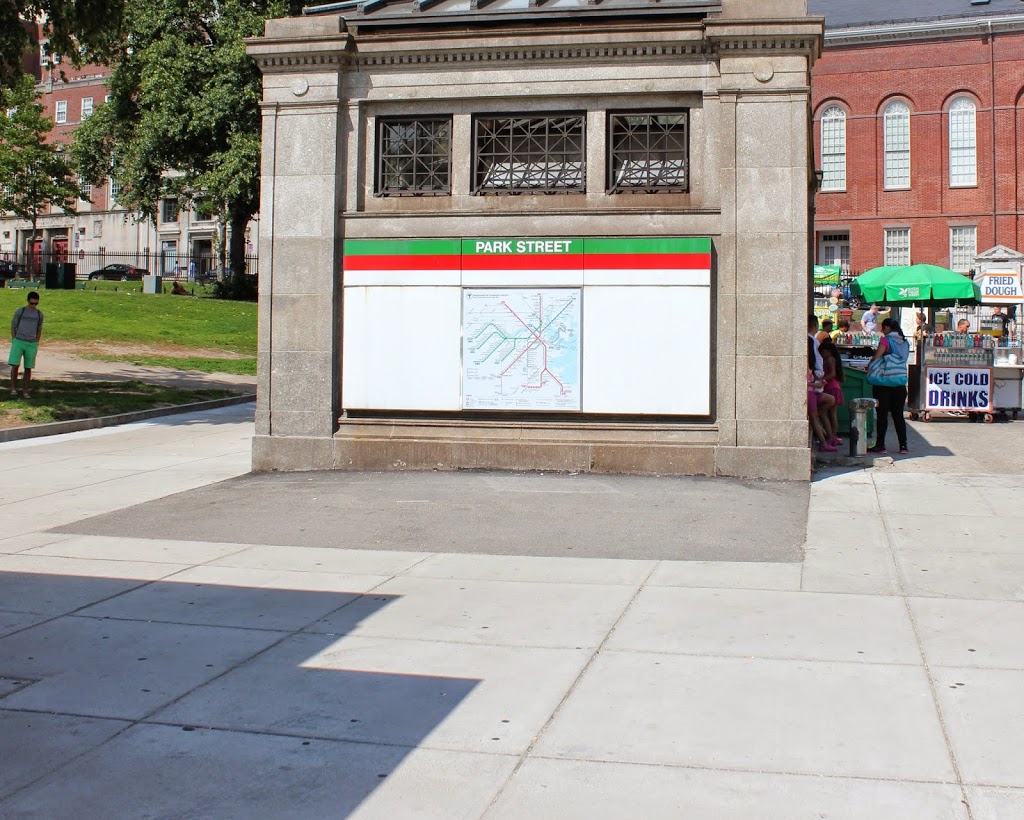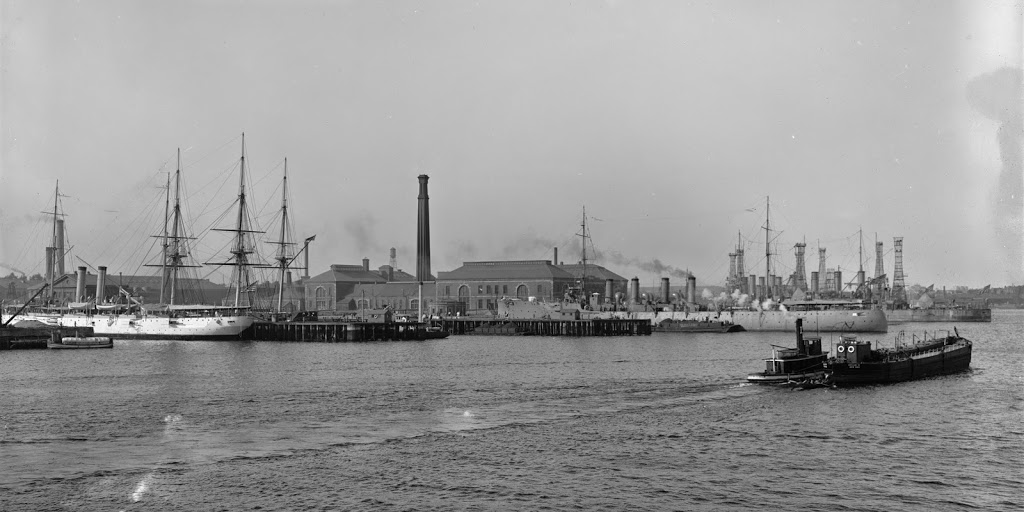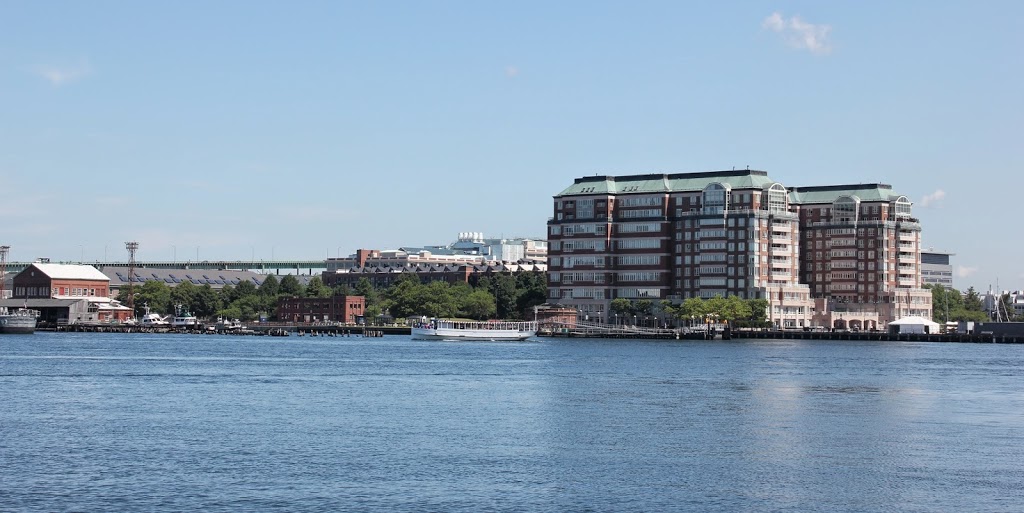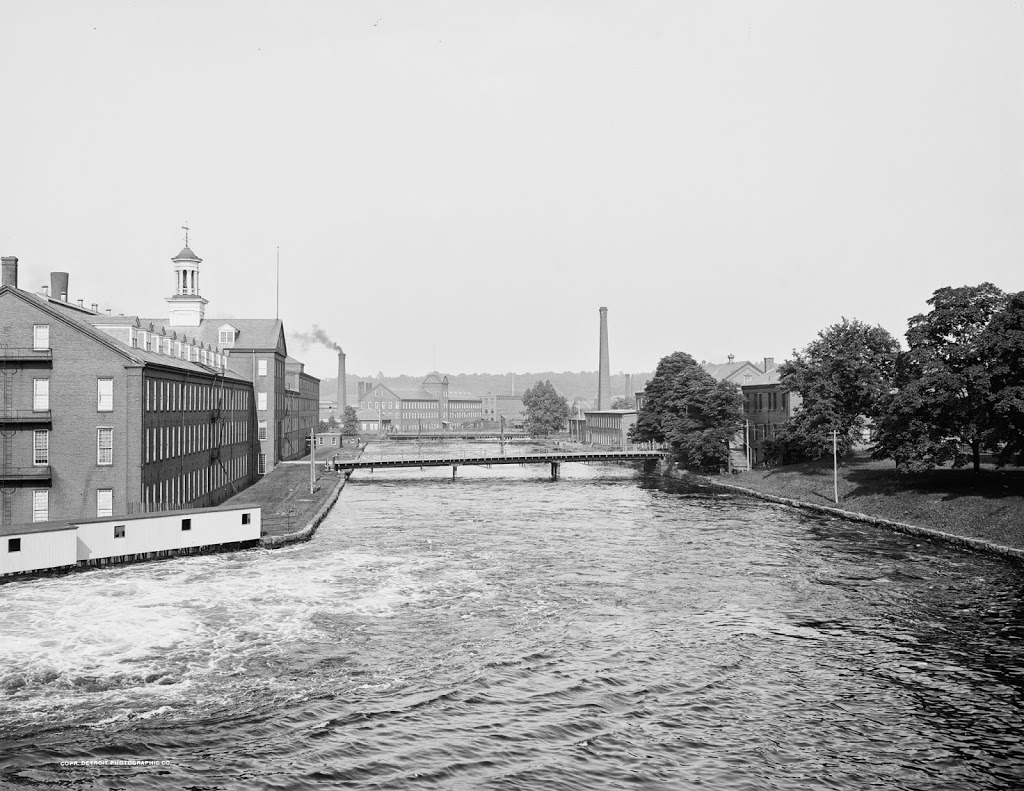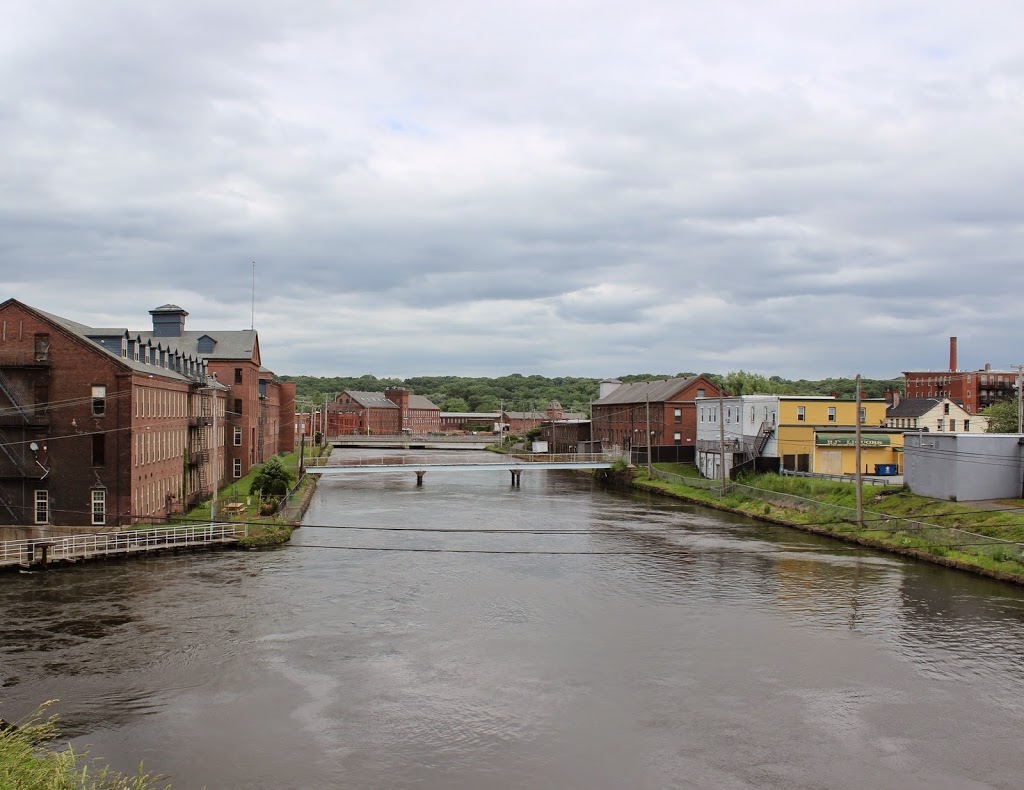Boston’s Custom House, around 1900-1906. Image courtesy of the Library of Congress, Detroit Publishing Company Collection.
The building in 2014:
Although no longer used as a US Customs office, the Custom House still looks much the same as it did when it was completed in 1849, aside from the addition of a 32-story skyscraper on top of it. When it was built, it was on the waterfront, roughly level with Quincy Market, which was also located along the water. It was a convenient location, as it facilitated the inspection of ship cargoes. Today it is several blocks away from Long Wharf, but it continued to be used by Customs for many years.
By the time the first photo was taken, the increase in shipping to Boston necessitated expanding the Custom House, which led to the construction of the Custom House Tower in 1915. At the time, Boston restricted the height of buildings to 125 feet, but as a federal building it was exempt from these restrictions. As a result, it was the tallest building in Boston until the completion of the Prudential Tower in 1964. US Customs left the building in 1986, and it is now a Mariott hotel.

